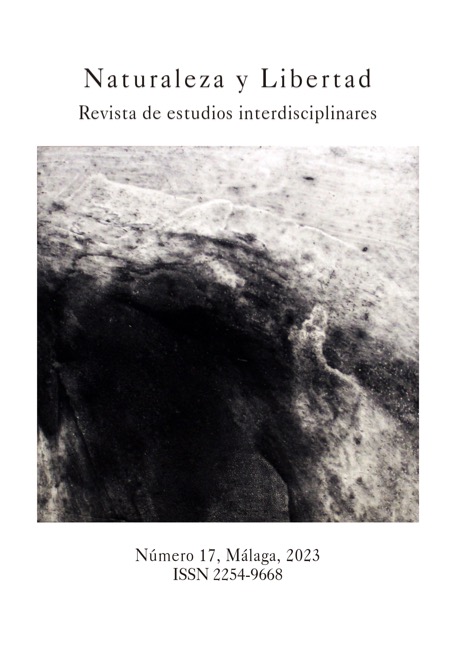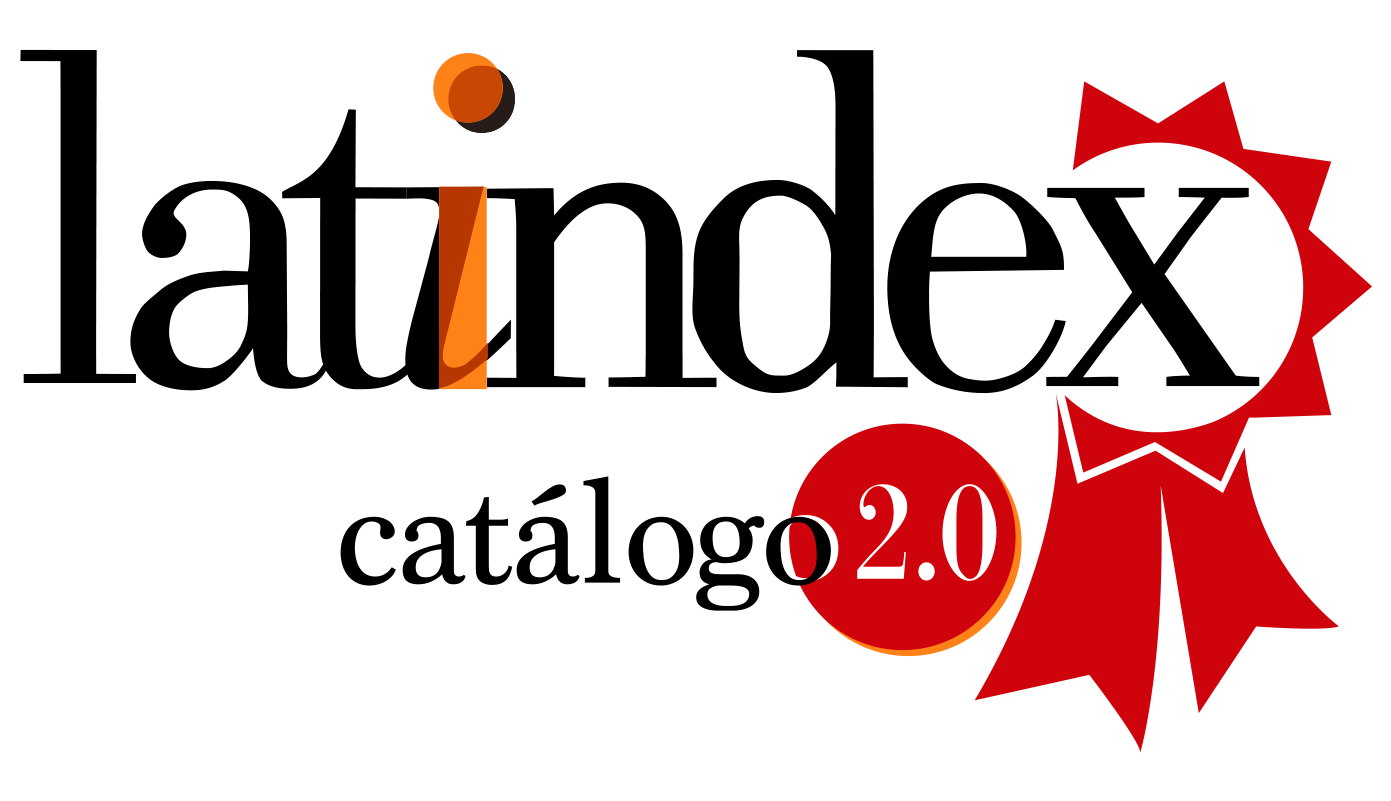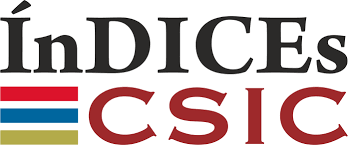Homo corpor?lis? Horizons of corporeality in the prehistoric past
DOI:
https://doi.org/10.24310/NATyLIB.2023.vi17.16507Keywords:
Hominization, Corporality, Somatic modes of attention, Biological and cultural evolution, PrehistoryAbstract
This article proposes the usefulness of an approach from corporality for the analysis of the prehistoric past and, fundamentally, of the hominization process. In this sense, three processes are addressed: the emergence of bipedalism, the production of the first stone tools and the possible origin of language from motor gestures. It is considered that these adaptations cannot be reduced to mere physical expressions of thought, and that they must be understood as bodily techniques learned through a long process of experimentation from somatic modes of attention. In this way, it is intended to address the biological and cultural aspects of evolution as incommensurable of the human experience.
Downloads
Metrics
References
Alloa, E. (2014) [en línea] «Reflexiones del cuerpo: sobre la relación entre cuerpo y lenguaje», Eidos: revista de filosofía de la Universidad del Norte (21), pp. 200-220. https://marcalyc.redalyc.org/articulo.oa?id=85430922011
Arellano Hernández, A. (2015) Epistemología de la Antropología: conocimiento, técnica y hominización. México: Ediciones Eón.
Bourdieu, P. (2008). El sentido práctico. Madrid: Siglo XXI.
Carbonell, E. (2015). Homínidos. Las primeras ocupaciones de los continentes. Barcelona: Ariel.
Carbonell, E., Bermúdez de Castro, J.M. y Sala, R. (2017) [en línea] «Homo sapiens: ¿quiénes somos? Características esenciales de nuestra especie», Mètode Science Studies Journal, Universitat de València, pp. 83-89. https://metode.es/revistas-metode/monograficos/homo-sapiens-quienes-somos.html
Citro, S. (2004). «La construcción de una antropología del cuerpo: propuestas para un abordaje dialéctico», VII Congreso Argentino de Antropología Social. Córdoba, Argentina.
Cohen, C. y Teixidor, E. (2011). La mujer en los orígenes: imágenes de la mujer en la prehistoria occidental. Madrid: Cátedra.
Coppens, Y. (1994) «East Side Story: the origin of humankind», Scientific American 270, pp. 62-69. DOI: 10.1038/scientificamerican0594-88
Diez Martin, F. (2005). El largo viaje. Arqueología de los orígenes humanos y las primeras migraciones. Barcelona: Bellatera arqueología.
Diez Martin, F. (2014). Breve historia del Homo sapiens. Madrid: Nowtilus.
Durkheim, E. (1992). Las formas elementales de la vida religiosa. El sistema totémico en Australia. Madrid: Akal.
González Grandón, X. (2016) [en línea] «El origen de una práctica motriz: el lenguaje de los primates humanos», Cuicuilco, 23 (65), pp. 183-216. https://www.redalyc.org/journal/351/35145329009/movil/
Haraway, D. (1984). Manifiesto Ciborg. El sueño irónico de un lenguaje común para las mujeres en el circuito integrado. Madrid: Katica Libros.
Ihde, D. y Malafouris, L. (2018). «Homo faber revisited: postphenomenology and material engagement theory», Philosophy y tecnology, 32 (2), pp. 195-214. DOI: 10.1007/s13347-018-0321-7
Ingold, T. (2008). «When ANT meets SPIDER: social theory for arthropods», en Knappett, C. y Malafouris, L. (Eds.), Material Agency: Towards a Non-Anthropocentric Approach, pp. 209-215. Springer Science+Business Media. https://doi.org/10.1007/978-0-387-74711-8_11
Johansson, S. (2021). En busca del origen del lenguaje. Dónde, cuándo y por qué el ser humano empezó a hablar. Barcelona; Ariel.
Kappelman, J et. al (2016) «Perimortem fractures in Lucy suggest mortality from fall out of tall tree», Nature 537, pp. 503-507. DOI: 10.1038/nature19332
Lambek, M. (2011) «Cuerpo y mente en la mente, cuerpo y mente en el cuerpo. Algunas intervenciones antropológicas en una larga conversación», Cuerpos plurales. Antropología de y desde los cuerpos. Silvia Citro (coord.). Buenos Aires. Biblos.
Leakey, R. y Lewin, R. (2015) Nuestros orígenes: en busca de lo que nos hace humanos. Barcelona: Crítica.
Leroi-Gouran, A. (2010) {1945} «La liberación de la mano», Laboreal 6 (2). https://doi.org/10.4000/laboreal.8872
Lovejoy, O. (2009). «Reexamining Human Origins in Light of Ardipithecus ramidus», Science 326, 74. DOI: 10.1126/science.1175834
Malafouris, L. (2013) How things shape the mind: A Theory of Material Engagement, The MIT Press. https://doi.org/10.7551/mitpress/9476.001.0001
Maldonado, S. (2019). Cuerpo y Sociedad. Una comprensión de las relaciones humanas desde la coporeidad. Buenos Aires: Prometeo Libros.
Mauss, M. (1934). «Técnicas y movimientos corporales», en Sociología y Antropología. Madrid: Tecnos.
McPherron, S. Alemseged, Z., Marean, C., Wynn, J., Reed, D., Geraards, D., Bobe, R. y Béarat, H. (2010) «Evidence for stone-tool-assisted consumption of animal tissues before 3.39 million years ago at Dikika, Ethiopia», Nature 12 (466) DOI:10.1038/nature09248.
Merleau-Ponty, M. {1945} (1993): Fenomenología de la percepción. Buenos Aires: Planeta.
Moragón Martinez, L. (2014) Cuerpo y sociedades orales. Una reflexión sobre la concepción del cuerpo y sus implicaciones en el estudio de la prehistoria. Tesis doctoral. Universidad Complutense de Madrid: Facultad de Geografía e Historia, Departamento de Prehistoria.
Toboso Martin, M. y Guzmán Castillo, F. (2010) [en línea] «Cuerpos, capacidades, exigencias funcionales... y otros lechos de Procusto», Política y sociedad, 47 (1). https://doaj.org/article/2e3d4c32b9cd400886c2a7855343f7ea
Downloads
Published
How to Cite
Issue
Section
License
Copyright (c) 2023 Nature & Freedom. Journal of Interdisciplinary Studies.

This work is licensed under a Creative Commons Attribution-NonCommercial-ShareAlike 4.0 International License.
Those authors who have publications with this journal, accept the following terms:
1. Copyright and licensing information are clearly described on the journal’s web site: all content published in Naturaleza y Libertad is open acces without limit, and are subject to the Attribution-NonCommercial-ShareAlike 4.0 International (CC BY-NC-SA 4.0) license. The full text of which can be consulted at https://creativecommons.org/licenses/by-nc-sa/4.0/
2. It is the responsibility of the authors to obtain the necessary permissions for the images that are subject to copyright. The authors whose contributions are accepted for publication in this journal will retain the non-exclusive right to use their contributions for academic, research and educational purposes, including self-archiving or deposit in open access repositories of any kind. The electronic edition of this magazine is edited by the Editorial de la University of Malaga (UmaEditorial), being necessary to cite the origin in any partial or total reproduction.
3. This journal allows and encourages authors to publish papers on their personal websites or in institutional repositories, both before and after their publication in this journal, as long as they provide bibliographic information that accredits, if applicable, your posting on it.
4. In no case will anonymous papers be published.





18.png)













